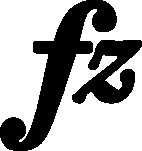



|
b. 373
|
composition: Op. 39, Scherzo in C♯ minor
..
Both rhythmical variations are most likely authentic. The fact that (in GC in LH there is a notation error of the first octave - see previously annotation) category imprint: Differences between sources |
|||||||
|
b. 373
|
composition: Op. 21, Concerto in F minor, Mvt III
..
GE1 (→FE) overlooked category imprint: Differences between sources issues: EE revisions , Errors in GE , GE revisions |
|||||||
|
b. 373-374
|
composition: Op. 11, Concerto in E minor, Mvt III
..
The notation of FE is unclear – in bar 374, opening a new line of text, an ending of a slur that was probably reaching the top note of the d2-b2 sixth was printed (the slur is inaccurate, it cannot be ruled out that it was supposed to apply to the bottom note), yet in bar 373, there is no slur suggesting continuation in the next bar. GE and EE specified the notation differently:
Moreover, if we assume that the slur in the 2nd half of bar 373 was inaccurately reproduced and is too short, the discussed fragment of the slur in bar 374 may be considered an ending of that slur. We discuss this and other issues related to slurs and phrase marks in a separate note. category imprint: Differences between sources issues: Inaccuracies in FE , GE revisions |
|||||||
|
b. 373-374
|
composition: Op. 11, Concerto in E minor, Mvt III
..
In FE, the slurring of these bars is inaccurate – the slur in the 2nd half of bar 373 ends between the penultimate and the last semiquaver, whereas in bar 374, on a new line of text, there is a slur, reaching the 1st quaver, suggesting continuation from the previous bar. We consider the interpretation adopted in EE to be the text of FE, while the version of GE may be considered an alternative interpretation. As the 2nd triplet in bar 373 left without slur is also questionable, in the main text we suggest a slurring modelled after analogous bars 377-378. category imprint: Differences between sources; Editorial revisions issues: Annotations in teaching copies , Errors in GE , Annotations in FEH |
|||||||
|
b. 373
|
composition: Op. 11, Concerto in E minor, Mvt III
..
In GE and – probably on the basis thereof – in EE2 (→EE3), cautionary sharps were added before g category imprint: Differences between sources; Editorial revisions issues: Annotations in teaching copies , EE revisions , GE revisions , Cautionary accidentals , Annotations in FEH |



 appears just once in
appears just once in 
 in
in 







 1 and f
1 and f before a1.
before a1.